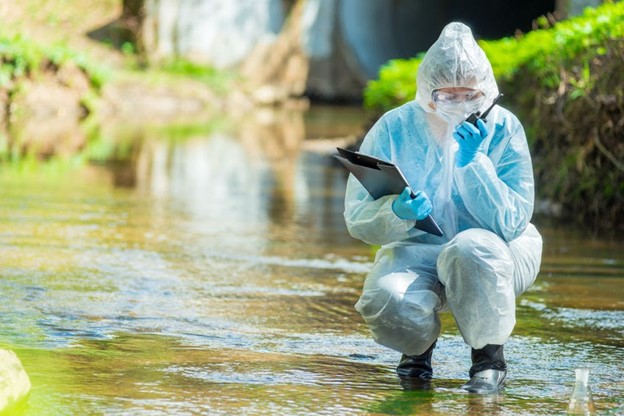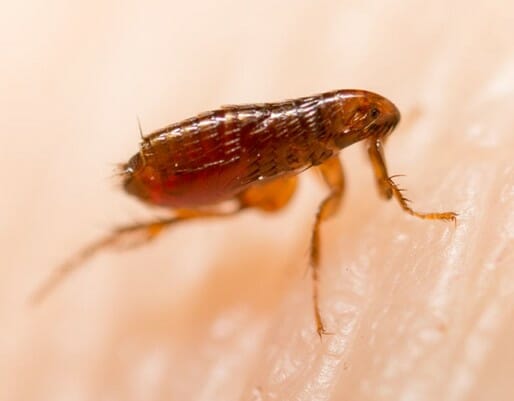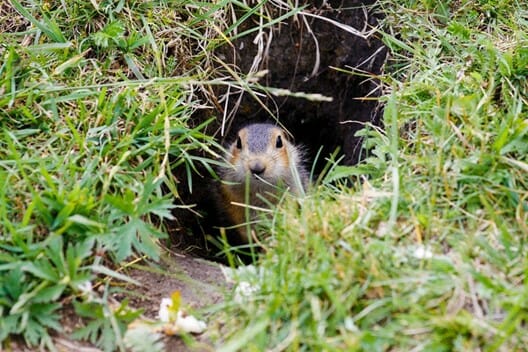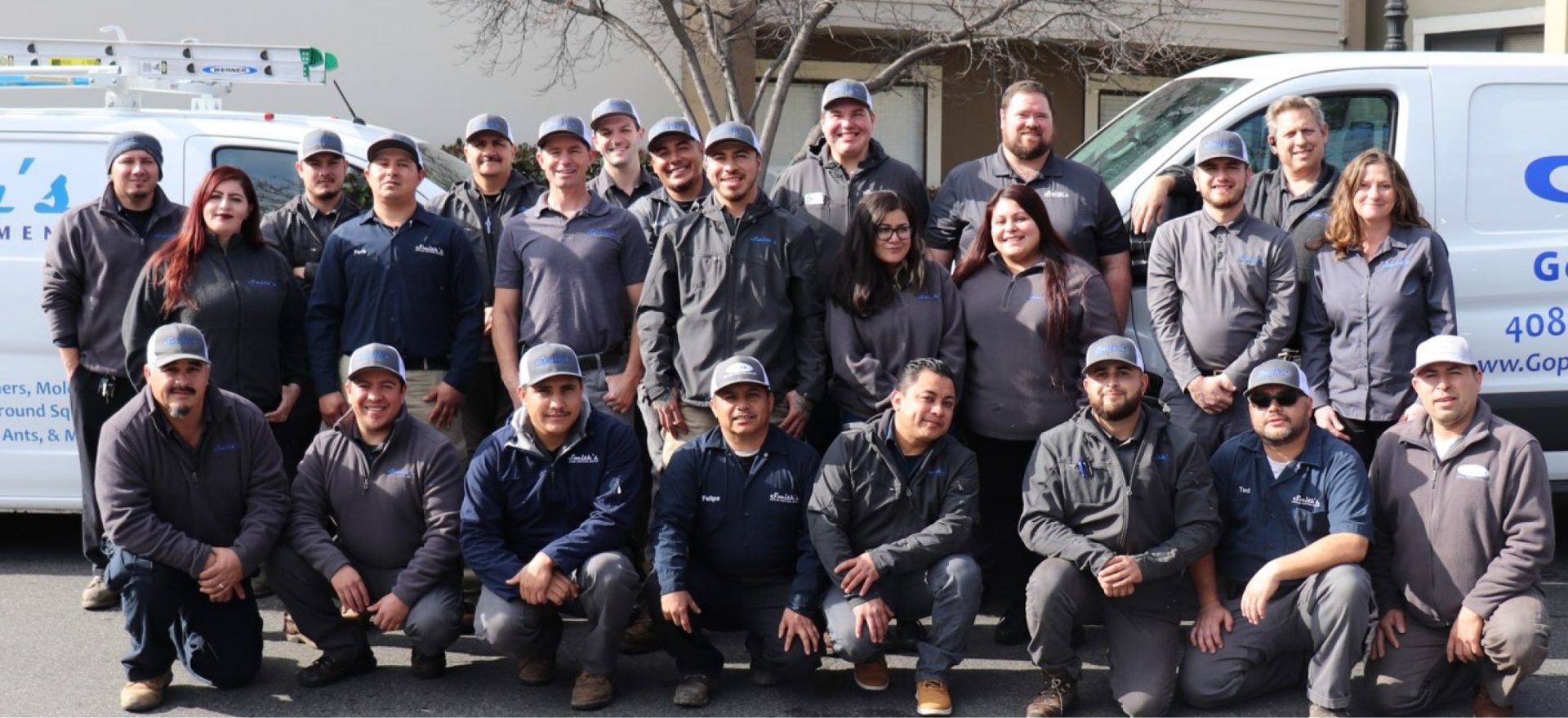For many, the Bubonic Plague sounds like something out of ancient history. For some California residents, though, it’s become a modern reality.
On August 20 of this year, state officials announced that a person in the South Lake Tahoe area had contracted the Plague – the state’s first case of the disease in five years.
Spread by rodents, especially the ground squirrel, the Plague presents a genuine health risk for California residents and their families.
While the presence of the Bubonic Plague in ground squirrels in California is frightening, Smith’s Pest Management can help decrease your risk of coming into contact with the disease.
Offering comprehensive pest control services, we help property owners across the San Francisco Bay Area protect their homes.
Today, we’re sharing some background on the relationship between ground squirrels and the plague, and some professional tips to keep the disease away from your family and household. Let’s dive in.
Bubonic Plague in California in 2020: An Overview

The Bubonic Plague, also known as Black Death, originated in Asia roughly 2,000 years ago, where it spread on trading ships.
The disease first made its way to Europe around 1347, when 12 ships full of infected sailors from the Black Sea docked in Sicily.
Over the next five years, the disease killed more than 25 million people throughout Europe – roughly a third of the continent’s population.
Eventually, scientists discovered that the Bubonic Plague spreads from person to person via respiratory droplets or through the bite of infected fleas and rodents.
While the Plague is rare in humans, it does still exist in rodents, which is how it’s made its way to California today.
According to the Los Angeles Department of Public Health:
“Today, wild rodents in rural areas are the principal source of plague in Los Angeles county…Since 1979 there have been three cases of human plague contracted within the county. Two cases were the result of contact with infected rodent fleas.”
As it stands now, the Plague is common in several California regions: primarily the foothills, mountains, and coast of the state. It is absent from the Central Valley and the Southeastern desert regions.
While various rodents can spread the Plague, the ground squirrel is the most common carrier.
Ground Squirrel Diseases
While some people think they look cute from afar, ground squirrels in California can carry many infectious diseases and are primarily responsible for the Bubonic Plague’s current outbreak in California.
According to the University of California’s Agriculture and Natural Resources department:
“Ground squirrels are associated with the spread of Rocky Mountain spotted fever, rat bite fever, tularemia, Chagas’ disease, adiospiromycosis, and encephalomyocarditis. Notably, they can serve as reservoirs for sylvatic (bubonic) plague, a highly infectious disease caused by the bacteria Yersinia pestis…People and their pets can get plague if they visit or live in areas where ground squirrels or other rodents are infected.”
For people who want to avoid coming into contact with Bubonic Plague, limiting exposure to ground squirrels is critical.
How Does a Squirrel Get Bubonic Plague?

Like many diseases, the Plague occurs naturally throughout the Western United States. It is especially common in Arizona, California, Colorado, Utah, and New Mexico.
The bacteria that causes the plague (Yersinia pestis) begins its transmission cycle with fleas.
According to the Centers for Disease Control and Prevention (CDC), ground squirrels contract the disease when an infected flea bites them.
Over time, the disease kills the infected squirrel, causing the hungry fleas to abandon the dead animal and seek another host – typically another squirrel or rodent, or even a house pet. The disease continues to spread in this way.
Am I At Risk of Getting the Plague?
Humans can contract the Plague from affected animals.
When the Plague starts affecting large numbers of its primary hosts (ground squirrels, in this case) and begins to impact other species, such as cats and dogs, it’s known as an epizootic.
According to the CDC, humans are usually more at risk of contracting the Plague during, or shortly after, a plague epizootic.
The Plague bacteria can be transmitted to humans in the following ways:
- A bite from an infected flea.
- Contact with contaminated tissues or fluids (common in hunters who may come into contact with infected animals, for example).
- Contact with infectious droplets from a person or an infected animal, although this type of spread has not been documented in the United States since 1924.
- Pet involvement, such as when a house cat comes into contact with an infected squirrel.
What Are the Symptoms of the Plague?
While there are effective treatments for the Bubonic Plague in humans, it is a horrendous disease by all accounts. Symptoms include:
- Fever
- Chills
- Muscle aches
- Weakness
- Swollen and tender lymph nodes
The incubation period for the Plague is about 2-6 days. The disease is highly curable when diagnosed early.
If the Plague is not treated in time, it can become more severe – leading to a life-threatening blood infection or pneumonia.
How Can I Protect Myself and My Family from the Plague?

Despite the current outbreak of Bubonic Plague in ground squirrels in California, there are many ways to protect yourself and your home. Follow these tips:
- Keep free-roaming cats indoors. If you cannot stop an animal from free-roaming, take steps to minimize their contact with rodents and fleas. Putting a bell on your cat’s collar is a good option. Talk to your vet about protecting your free-roaming cat with oral or topical flea control. Finally, be careful when handling the pet. Avoid close face-to-face contact with free-roaming cats and have the animal evaluated by a veterinarian.
- Avoid contact with rodents and their fleas. If you find a sick or dead rodent, do not touch it. Instead, report the rodent to local rangers and health authorities.
- Control rodent populations around your home and outbuildings. Prevent rodents from entering buildings by removing access to food or shelter (as much as possible). For best results, work with a professional company like Smith’s Pest Management, which offers effective ground squirrel control services.
- Be careful during recreational activities. Avoid camping, sleeping, or resting near animal burrows. Avoid feeding rodents and be sure to store all food in rodent-proof bins. If you’re hiking in a Plague area, dress in long pants, tucked into boots. This will help reduce your exposure to fleas.
Dealing with Ground Squirrels in the San Francisco Bay Area? We’re Here to Help!
We understand that the recent Plague outbreak is frightening for California families.
Fortunately, our team is here to help.
Specializing in pest control for residential and commercial properties, Smith’s Pest Management will decrease ground squirrel populations around your home with ground squirrel control services, to help limit possible exposure to the Plague bacteria.
We offer local, family-owned, eco-conscious services and creative pest control solutions for every pest management issue.
Smith’s Pest Management also works with parks and large facilities to eradicate ground squirrels. Contact us today to learn more or to request a quote!
Disclaimer: The Content is not intended to be a substitute for professional medical advice, diagnosis, or treatment. Always seek the advice of your physician or other qualified health provider with any questions you may have regarding a medical condition.


